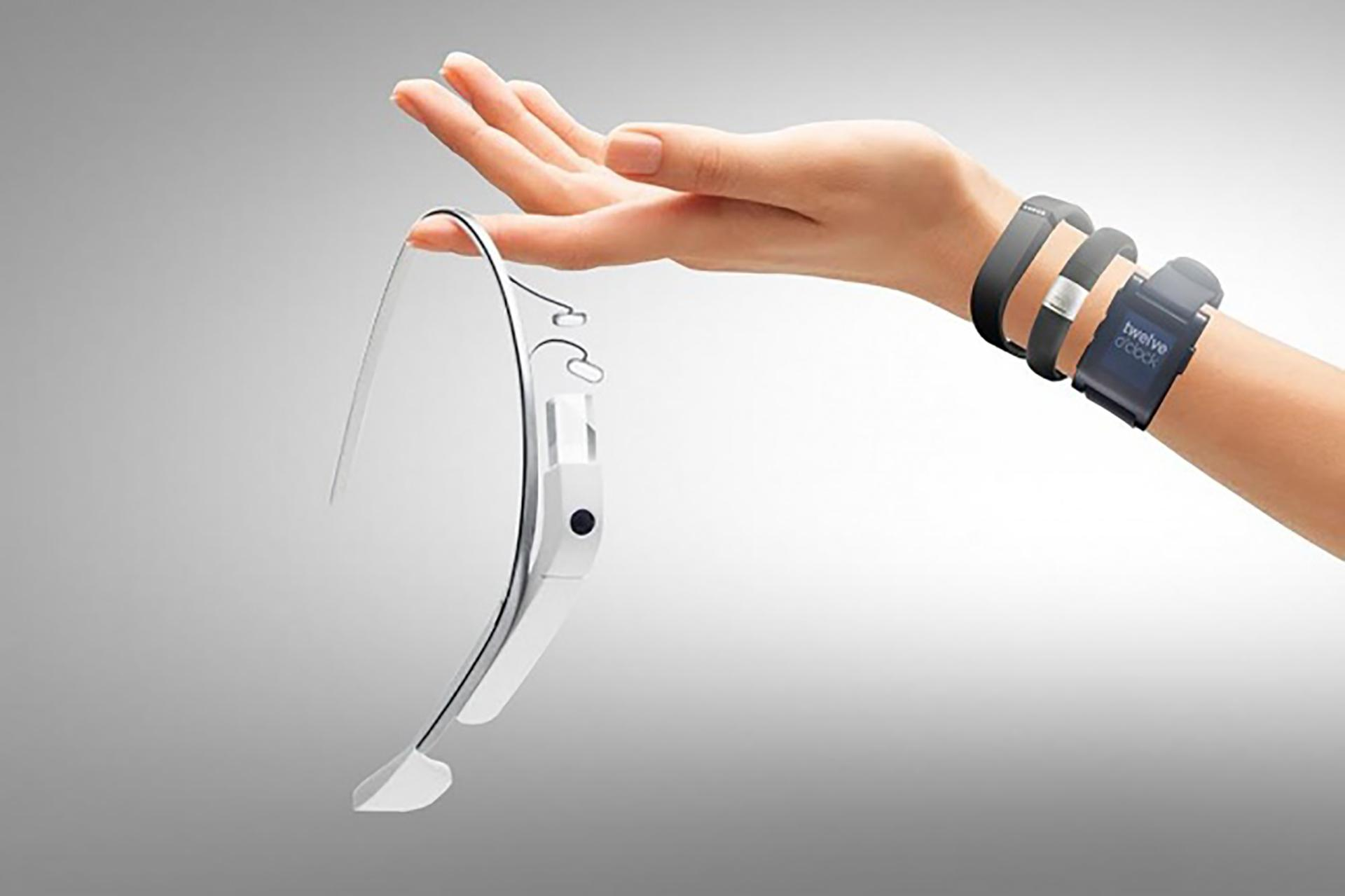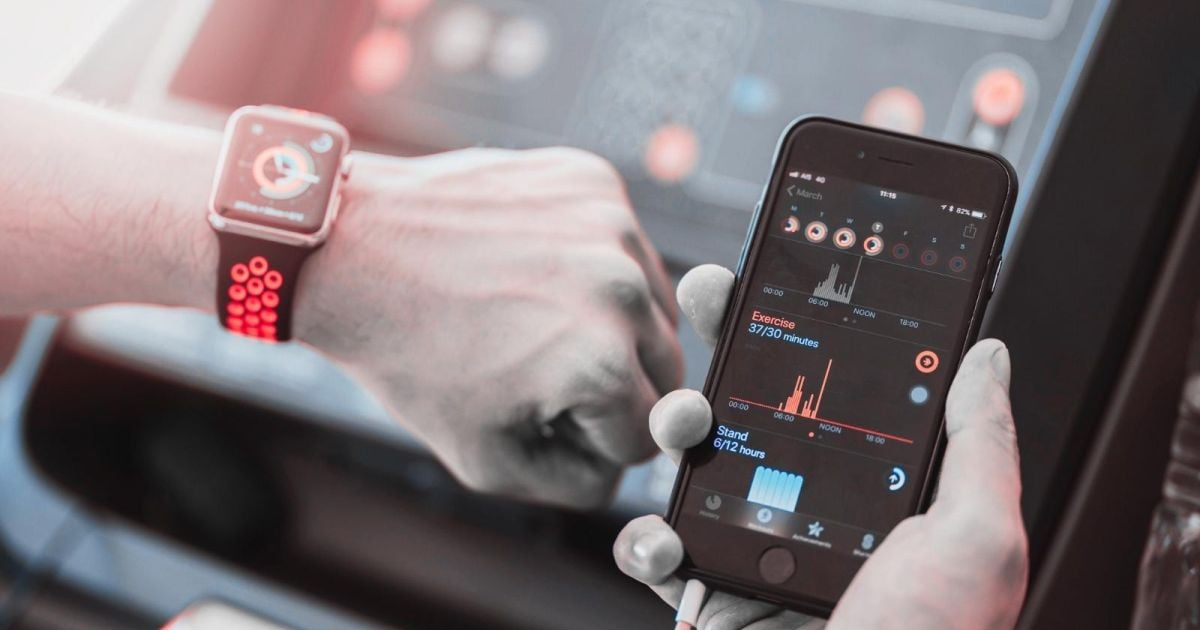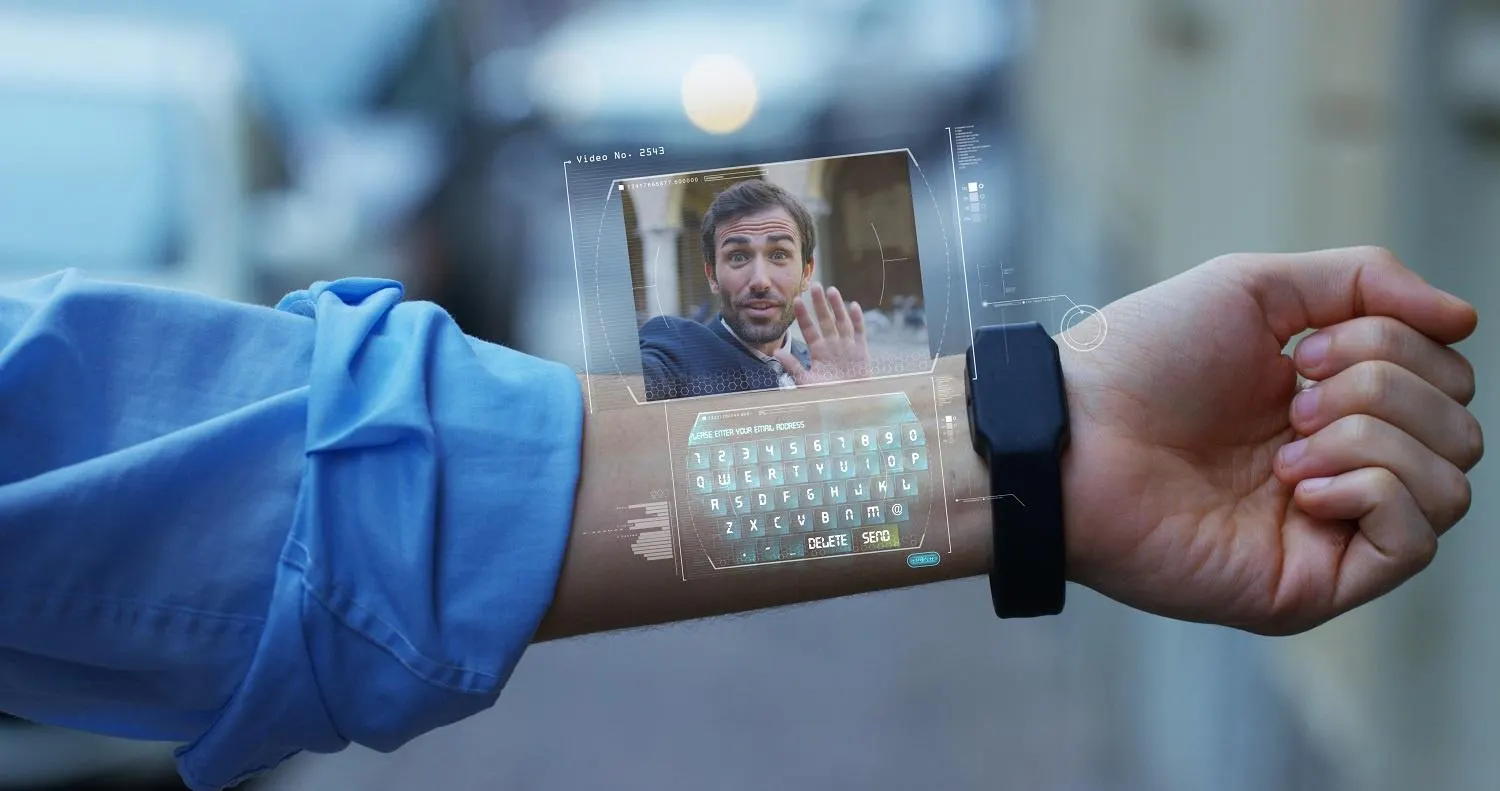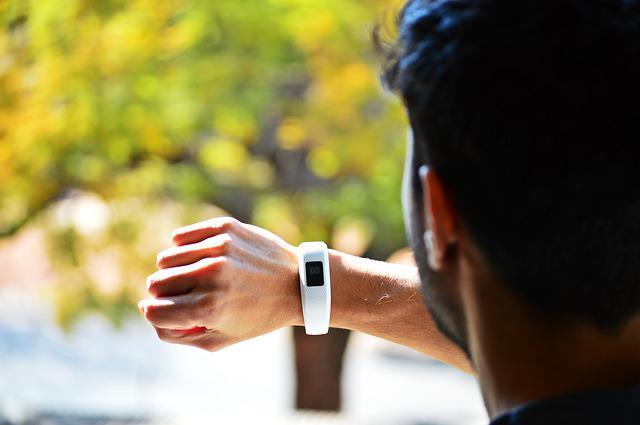The constantly evolving technology has become an integral part of our lives. From smartphones to smartwatches, gadgets have revolutionized the way we communicate, work, and entertain ourselves.
But what if technology could go beyond just handheld devices? What if it could become an extension of our bodies? Enter wearable tech – the future of gadgets.
Understanding Wearable Technology

Wearable technology refers to electronic devices that can be worn on the body, often incorporating sensors and wireless connectivity. These devices are designed to enhance our daily lives by seamlessly integrating technology into our clothing, accessories, and other devices or even our own bodies.
Imagine a world where your clothing not only keeps you warm but also tracks your heart rate, monitors blood oxygen levels and your stress levels, and even charges your phone. This is the future that wearable technology promises, a future where our everyday objects become smart and interconnected.
Wearable tech comes in many forms, ranging from smartwatches and fitness trackers to augmented reality glasses and wearable healthcare devices. These gadgets and other sensors are equipped with features that allow us to monitor our physical activities, receive notifications, and even interact with virtual environments.
For fitness enthusiasts, wearable tech has revolutionized the way we track our workouts. With devices like fitness trackers, we can monitor our steps, calories burned, and even our sleep patterns. These devices provide us with valuable insights into our health and help us set and achieve our fitness goals.
But the wearable technology market is not limited to just fitness. Augmented reality glasses, like the famous Google Glass, have opened up new possibilities in various industries. From healthcare to manufacturing, these glasses provide workers with hands-free access to information, allowing them to perform tasks more efficiently and accurately.
While wearable technology may seem like a recent innovation, its roots can be traced back to decades ago. The first wearable computer was developed in the 1960s, paving the way for subsequent advancements in the field. As technology progressed, so did the capabilities of wearables, leading a decade ago to the introduction of devices like the iconic iPod and the groundbreaking Google Glass.
Today, wearable technology continues to evolve at a rapid pace. From smart clothing that can regulate body temperature to smart shoes and jewelry that can track our emotions, the possibilities for wearable device are endless. As more and more people embrace wearable tech, we can expect to see even more innovative and life-changing devices in the future.
The Impact of Wearable Tech on Daily Life

As wearable tech becomes more prevalent, its impact on various aspects of our daily lives is inevitable. Let’s explore two major areas where wearables have made a significant difference.
Wearable Tech in Health and Fitness
Fitness trackers and smartwatches have become popular in recent years, revolutionizing the way we monitor our health and physical activity. These wearables provide real-time data on our heart rate, sleep patterns, and calorie burn, enabling us to make more informed decisions about our lifestyle, mental health and well-being.
Imagine waking up in the morning and strapping on your fitness tracker. As you go about your day, it not only tracks your steps and distance traveled but also monitors your heart rate and sleep quality. With this information, you can adjust your exercise routine, ensuring you reach your fitness goals while also prioritizing rest and recovery.
Furthermore, wearable tech has opened up new possibilities for personalized health tracking. Some advanced devices can even detect irregular heart rhythms, alerting users to potential health issues. This early detection can be life-saving, as it allows individuals to seek medical attention before a serious problem arises.
According to a survey conducted by Research Dive, the global wearable fitness technology market is expected to reach a staggering $12.4 billion by 2027. This growth can be attributed to increasing adoption due to the ever aging population, increasing awareness of fitness and the rising demand for personalized health tracking tools.
Wearable Tech in Entertainment and Gaming
While health and fitness may seem like the primary focus of wearable tech, it has also made significant strides in the entertainment and gaming industries. Virtual reality (VR) headsets, for example, offer an immersive gaming experience, transporting players into virtual worlds.
Imagine putting on a VR headset and being instantly transported to a fantasy realm, where you can battle mythical creatures or explore ancient ruins. The level of immersion provided by wearable tech enhances the gaming experience, making it more engaging and captivating.
Not only limited to gaming, wearable tech has also revolutionized the way we consume entertainment. Smart glasses, for instance, can overlay digital information onto the real world, creating an augmented reality experience. This technology has the potential to transform how we watch movies, with virtual characters appearing right in our living rooms.
The global virtual reality gaming market is projected to reach $46.9 billion by 2027, as reported by Grand View Research. This indicates the increasing popularity and increasing demand for wearable devices that enhance the gaming experience.
Wearable tech has had a profound impact on various aspects of our daily lives. From improving our health and fitness tracking to enhancing our entertainment and gaming experiences, these devices have become an integral part of modern living. As technology continues to advance, we can expect even more innovative and exciting developments in the field of wearable tech.
The Role of Wearable Tech in Various Industries

Wearable technology is not limited to personal use – it has also found its way into various industries, reshaping the way businesses operate and industries function.
Wearable Tech in the Medical Field
In the medical field, wearable devices have proven to be invaluable tools for monitoring patients’ health remotely. These devices can track vital signs, detect irregularities, and allow doctors to see patient outcomes and provide timely interventions. The global wearable medical devices market is expected to surpass $20 billion by 2026, according to Global Market Insights Inc.
Furthermore, wearable tech has revolutionized patient care by enabling continuous health monitoring even outside of traditional healthcare settings. Patients can now wear devices that track physiological parameters such their heart rate, blood pressure, and even sleep patterns. This data can be transmitted to healthcare professionals in real-time, allowing for early detection of potential health issues and personalized treatment plans.
Additionally, wearable devices have been instrumental in assisting individuals with chronic conditions such as diabetes. Smartwatches equipped with glucose monitoring capabilities can provide real-time blood sugar readings, allowing diabetic patients to to manage their condition more effectively and make informed decisions about their diet and medication.
Wearable Tech in the Business Sector
Wearable tech has also found its place in the business sector, improving productivity and efficiency in various industries. For instance, many smart watches and glasses enable workers to access information hands-free, improving their ability to carry out complex tasks. According to a report by PwC, wearable technology has the potential to increase productivity by 8.5% in the warehouse sector alone.
Moreover, wearable devices have transformed the way employees collaborate and communicate. With the help of smartwatches or smart badges, workers can easily stay connected and receive notifications, messages phone calls, and updates in real-time. This seamless communication streamlines workflow and reduces the need for constant interruptions or reliance on traditional communication channels.
Another significant application of wearable tech in the business sector is in the field of employee health and safety. Wearable devices can monitor workers’ physical well-being, such as heart rate and body temperature, and alert them or their supervisors in case of any potential risks or emergencies. This proactive approach to safety not only protects employees but also minimizes downtime due to accidents or health-related issues.
Furthermore, wearable tech has proven to be a game-changer in the logistics and supply chain industry. With the help of location-tracking wearables, companies can efficiently manage inventory, track shipments, and optimize routes for delivery. This level of visibility and control enhances efficiency, reduces costs, and improves overall customer satisfaction.
Wearable technology has extended its reach beyond personal use and has become an integral part of various industries. From revolutionizing patient care in the medical field to enhancing productivity and safety in the business sector, wearable tech continues to reshape the way we work and live.
The Future Trends in Wearable Technology

As wearable tech continues to advance, it is essential to explore the future key trends, that will shape this rapidly evolving industry. Wearable technology has come a long way since its inception, and the possibilities for its future are endless.
One of the areas that will see significant developments is the design of wearable devices. Tech companies are investing in creating sleeker, more aesthetically pleasing wearables that seamlessly blend with our daily outfits while still delivering powerful functionality. The future of wearable tech design will focus on creating devices that are not only functional but also fashionable.
Imagine a smartwatch that looks like a stylish bracelet or a pair of smart glasses that resemble regular eyewear. These advancements in design will make wearable technology more appealing to a wider range of users, ultimately increasing market growth and its adoption rate.
Another trend that will shape the future of wearable technology is the role of artificial intelligence (AI). AI-powered medical wearables that will be able to analyze vast amounts of data collected from our daily activities, providing personalized insights and recommendations for improving our health and lifestyle.
Imagine a fitness tracker that not only tracks your steps and heart rate but also analyzes your sleep patterns, stress levels, and nutrition. Based on this data, it can provide tailored recommendations on exercise routines, sleep schedules, and dietary choices. AI will revolutionize the way we interact with wearable devices, making them more intuitive and capable of understanding our individual needs.
In addition to design and AI, the future of wearable technology will also see advancements in sensor technology. Sensors are the backbone of wearable devices, collecting data that is essential for their functionality. As technology progresses, wearable sensors will become smaller, more accurate, and capable of measuring a wider range of metrics.
For example, future wearables may include sensors that can detect high blood pressure or glucose levels, monitor hydration levels, or even analyze the composition of food. These advancements in sensor technology will enable the wearables industry to provide even more precise and detailed insights into our health and well-being.
Furthermore, the future of wearable technology will also involve the integration of augmented reality (AR) and virtual reality (VR) capabilities. AR and VR have already made significant strides in various industries, such as gaming and entertainment. In the future, we can expect to see wearables that incorporate AR and VR technology, allowing users to have immersive experiences and interact with virtual objects in the real world.
Imagine wearing a pair of smart glasses that can overlay your digital health information onto your surroundings or a VR headset that transports you to a virtual fitness studio for an interactive workout. These advancements will open up new possibilities for education, entertainment, and communication.
As the field of wearable technology continues to evolve, we can expect to see even more innovative and exciting developments in the future. From advancements in design and AI to sensor technology and AR/VR integration, the possibilities for wearable tech are limitless. The future of wearable technology holds the promise of enhancing our lives in ways we can only imagine.
Challenges and Opportunities in Wearable Tech

As with any emerging technology, wearable tech presents both challenges and opportunities that need to be addressed.
One of the key challenges in wearable tech is privacy and security concerns. As wearable devices gather a wealth of personal data, including health information, location data, and even biometric data, privacy and security become paramount concerns.
Tech companies and regulatory bodies must work together to establish robust protocols and safeguards to protect users’ sensitive information from unauthorized access. This includes implementing strong encryption methods, ensuring secure data storage, and providing users with transparent control over their data.
Another challenge in the wearable tech industry is the need for seamless integration and user experience. Wearable devices should be comfortable to wear and easy to use, without compromising on functionality. Designing devices that are aesthetically pleasing, lightweight, and durable is crucial to ensure widespread adoption and user satisfaction.
Potential for Innovation and Growth
Despite the challenges, the potential for innovation, development and growth in the wearable tech industry is immense. As more industries adopt wearable technology, new use cases and opportunities for entrepreneurs and developers arise.
One area where wearable tech is making a significant impact is in healthcare. Wearable devices such as smartwatches and fitness trackers are enabling individuals to monitor their health in real-time, track their fitness goals, and even detect potential health issues. This not only empowers individuals to take control of their own health but also provides valuable data for healthcare professionals to make more informed decisions.
In the sports industry, wearable tech is revolutionizing the way athletes train and perform. From smart clothing that monitors body temperature and hydration levels to sensors embedded in sports equipment to track performance metrics, wearable devices are helping athletes optimize their training and prevent injuries.
Furthermore, wearable tech is also finding applications in industries such as manufacturing, logistics, and retail. For example, workers in manufacturing plants can use smart glasses to access real-time instructions and information, improving productivity and safety.
In retail, smart clothing with embedded sensors can provide personalized shopping experiences, allowing customers to receive recommendations based on their preferences and body measurements.
Overall, wearable tech is not just limited to gadgets worn on the wrist. The possibilities are endless, with advancements in smart fabrics, implantable devices, and augmented reality glasses. These wearable technologies have the potential to reshape industries and enhance our everyday lives.
As we look to the future, it is clear that wearable tech is here to stay. With its ability to seamlessly integrate into our lives, these gadgets are reshaping the future of gadgets and promising a more connected and technologically enhanced world. So, get ready to embrace the future – wearables will soon become an indispensable part of our everyday lives.
